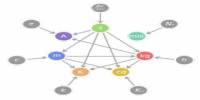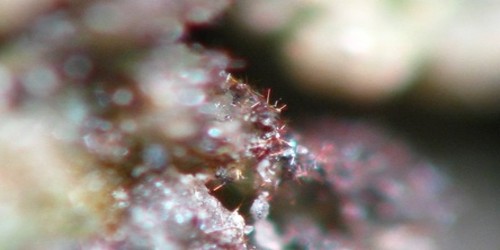| Term | Definition | Cause | Effect |
| Bell’s Palsy | A form of Neuritis that involves paralysis of the facial nerve causing weakness of the muscles of one side of the face and an inability to close the eye. | Unknown.
(Recovery may occur spontaneously.) | Paralysis of the facial nerve;
weakness of the muscles of one side of the face;
may result in inability to close the eye.(In some cases the patient’s hearing may also be affected in such a way that sounds seem to him/her to be abnormally loud. Loss of taste sensation may also occur.) |
| Cerebal Palsy | A nonprogressive disorder of movement resulting from damage to the brain before, during, or immediately after birth. | Cerebal Palsy is attributed to damage to the brain, generally occuring before, during, or immediately after birth.It is often associated with other neurological and mental problems.There are many causes including birth injury, hypoxia, hypoglycaemia, jaundice and infection. | The most common disability is a spastic paralysis.
Sensation is often affected, leading to a lack of balance, and intelligence, posture and speech are frequently impaired. Contractures of the limbs may cause fixed abnormalities.
Other associated features include epilepsy, visual impairment, squint, reduced hearing, and behavioural problems. |
| Motor Neurone Disease | A progressive degenerative disease of the motor system occurring in middle age and causing muscle weakness and wasting. | Some forms of Motor Neurone Disease are inherited. | Motor Neurone disease primarily affects the cells of the anterior horn of the spinal cord, the motor nuclei in the brainstem, and the corticospinal fibres. |
| Multiple Sclerosis | A chronic disease of the nervous system that can affect young and middle-aged adults.
The course of this illness usually involves recurrent relapses followed by remissions, but some patients experience a chronic progressive course. | The myelin sheaths surrounding nerves in the brain and spinal cord are damaged, which affects the function of the nerves involved.The underlying cause of the nerve damage remains unknown. | | Multiple Scerosis affects different parts of the brain and spinal cord, resulting in typically scattered symptoms. | | These can include: | | Unsteady gait and shaky movement of the limbs (ataxia); | | Rapid involuntary movements of the eyes (nystagmus); | | Defects in speech pronunciation (dysarthria); | | Spastic weakness and retrobulbar neuritis (= inflammation of the optic nerve). |
|
| Myalgic Encephalomyelitis (ME) | A condition characterized by extreme disabling fatigue that has lasted for at least six months, is made worse by physical or mental exertion, does not resolve with bed rest, and cannot be attributed to other disorders. | Unknown.Often occurs as a sequel to such viral infections as glandular fever. | | Extreme disabling fatigue that has lasted for at least six months, is made worse by physical or mental exertion, does not resolve with bed rest, and cannot be attributed to other disorders. | | The fatigue is accompanied by at least some of the following: | | Muscle pain or weakness; | | Poor co-ordination; | | Joint pain; | | Sore throat; | | Slight fever; | | Painful lymph nodes in the neck and armpits; | | Depression; | | Inability to concentrate; | | General malaise. |
|
| Neuralgia | | Maybe due to previous attack of shingles (Postherpetic Neuralgia). | A severe burning or stabbing pain often following the course of a nerve. |
| Neuritis | A disease of the peripheral nerves showing the pathological changes of inflammation.
(This term may also be less precisely used to refer to any disease of the peripheral nerves, usually causing weakness and numbness.) | | Inflammation of the nerves, which may be painful. |
| Parkinson’s Disease | Degenerative disease process (associated with aging) that affects the basal ganglia of the brain. | Associated with a deficiency of the neurotransmitter dopamine.Also associated with aging. | Tremor, rigidity and poverty of spontaneous movements.The commonest symptom is tremor, which often affects one hand, spreading first to the leg on the same side then to the other limbs. It is most profound in resting limbs, interfering with such actions as holding a cup. The patient has an expressionless face, an unmodulated voice, an increasing tendency to stoop, and a shuffling walk. |
| Sciatica | A common condition arising from compression of, or damage to, a nerve or nerve root. | Usually caused by degeneration of an intervertebral disc, which protrudes laterally to compress a lower lumbar or an upper sacral spinal nerve root.The onset may be sudden, brought on by an awkward lifting or twisting movement. | Pain felt down the back and outer side of the thigh, leg, and foot. The back is stiff and painful. There may be numbness and weakness in the leg. |

















